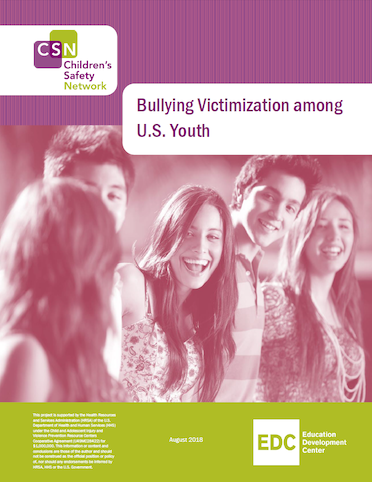
The U.S. Department of Health and Human Services defines bullying as repetitive aggressive behavior that is repeated over time and involves an imbalance of power or strength (Centers for Disease Control and Prevention [CDC], 2017a). Bullying behaviors may include teasing, name calling, mockery, threats, harassment, taunting, hazing, social exclusions, and rumors.
Bullying can be in the form of physical aggression, verbal aggression, efforts to isolate or harm a youth by attacking his or her relationships with others, or damaging property (Gladden, Vivolo-Kantor, Hamburger, & Lumpkin, 2013). Bullying is common and frequent among youth, making it an important public health issue.
According to the Centers for Disease Control and Prevention Morbidity and Mortality Report (CDC, 2016), approximately 15% of high school students in the U.S. experience cyberbullying and 20% experience bullying victimization on school property.
This fact sheet covers the burden and demographics of bullying victimization among U.S. youth and uses two large national data sources: the 2017 Youth Risk Behavior Surveillance System (YRBSS; CDC, 2017b) and the 2016 National Survey of Children's Health (NSCH; Child and Adolescent Health Measurement Initiative, 2016).